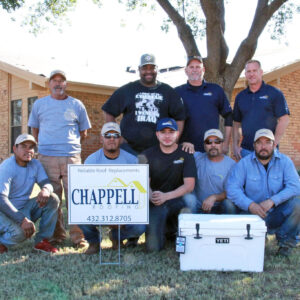
"The time to repair the roof is when the sun is shining."
John F. Kennedy
We help you find professional roofing contractors who are close to your home or business specializing in roof repair and replacement. These roofing companies are ready to serve you.
Flat Roof Repair
Let’s start by defining what a flat roof really is in the roofing industry.
A flat roof is a roof that is almost horizontal or level generally with a pitch of 1-10 degrees. Which means flat roofs are not really flat but have a slight pitch which allows water to run off the roof preventing water damage. Water should be able to flow off the roof and into a gutter system for proper water disposal. The slight pitch in the roof helps prevent water from pooling or puddling in order to avoid water damage.
Most flat roofs are found on commercial and industrial structures but can also be found on many residential patios, add-ons, and garages. There are several types of roofing systems that are used on flat roofs in the United States including, TPO, EPDM, Modified Bitumen, PVC, and BUR or Built-Up Roofing.
If you have an industrial building or commercial flat roof located in West Texas, you can reach out to the folks at Chappell Roofing for a good roofing company in midland texas.
The TPO roofing system is a single ply roofing membrane made up of synthetics and reinforcing scrim. The EPDM roofing system is a rubber roofing membrane made primarily of ethylene and propylene similar to what goes into making tires. A Modified Bitumen roofing system consist of several layers of roofing felt applied to the roof using hot-mopped asphalt. PVC roofing systems are a single ply flexible membrane made from polyvinyl chloride or plastic. And a BUR or Built-Up roofing system is made up of several layers of bitumen and then covered with an aggregate such as small stones or gravel.
It is not uncommon for roofs of any pitch to occasionally experience roof damage, or have water leaks including flat roofs. Mother Nature is still the greatest threat for any roofing system. Each year severe weather threatens homes and businesses with high wind, hail, heavy driven rain, electrical storms, tornadoes, hurricanes, and extreme heat and cold. And though there have been great strides made in manufacturing flat roof quality roofing products, there will remain a need for roof repair for the unforeseen future.
Flat roof repair can range from a simple fix to a complex reconstruction project. Even a small screw backing out of the decking can cause a huge problem. In some instances a large section may need to be removed and be replaced due to damage such as a large tree limb falling on the roof. The type of repair that is needed will depend on what type of roofing system has been used. When repairing TPO or PVC roofing a qualified professional with necessary experience, tools, and materials is needed.
For minor repairs such as small holes, and punctures rubber sealant will easily remedy the problem by cleaning the area with a cleaning solvent and applying roofing sealant directly to the area. Roofing sealant comes in a tube (caulk) or can for easy application. A spreading tool such as a putty knife and a utility knife will be needed on many of the patches. Bubbles or blisters should be carefully cut open using a sharp utility knife. Once the bubble has been cut open make sure it is dry then apply the roofing sealant and cover with a patch that is proper for that particular flat roof system. For convenience there are now patches available with peel-off adhesive backings that don’t require roofing adhesives.
For Built-Up roofs cut away the damaged area, apply roofing sealant or tar onto the area, smooth out the sealant and place an appropriate patch over the damaged area, apply more sealant and smooth it out. Finish the repair by pouring the matching aggregate over the patch.
In short, for simple flat roof repairs, adhesive patches should be used on rubber and synthetic membranes, while roof sealant with bitumen should be used on asphalt flat roofs.

What Do I Need To Know Before I Bid a Roof Job?
Do you ever wonder why there can be such a huge difference in cost estimates when it comes to roofing? Often after a hail storm you will find a long line of roof salesmen making their way through a community that has been hit hard offering free roof estimates.
Homeowners would have to be baffled by why one roofing contractor charges so much more than another. It is true that some roofing companies can demand more in cost than others because of their long standing brand and their track record for excellence. While others may just be getting their companies started and are willing to do the job for less profit. And those are just a couple of reasons.
Here are some things you should know about bidding a roof job:
It is always better to be able to visually inspect the roof. Being able to see the amount of damage not only to the shingles but to the decking, fascia, flashings, and ventilation. It will help you discover any unseen problems. Be sure to count the valleys, the eaves, the ridges and their lengths. You will need to know the square footage of the roof in order to be able to estimate the cost of the material needed for the project.
In most every case you can expect on any roofing project that you must figure the labor cost of the removal of the existing shingles and the cost of its disposal. Next you must figure the cost of the new roofing material. That will include the decking, if it has to be replaced, the new shingles, underlayment, roofing nails, roof vents, pipe vents, drip edge, flashing, roofing cement, and paint for the hardware. You will also figure your installation costs as well.
Other factors to consider before submitting a bid for a roofing project is steep roof charges for roofs with steep pitches. Some roofing projects have extra steep roofs that require harnesses to be worn by the roof installers. Extra cost has to be figured if the house has two stories or more. Roof installers charge more for some types of roofing material than others such as slate, metal, clay as compared to asphalt shingles. All these factors must be taken into account before the final bid is submitted. Other costs may include expenses such as equipment fees, delivery fees, city permit fees, fuel costs, and insurance.
Once you have calculated all of the expense cost of the roofing project, decide what you want your profit margin to be and add it in for the total bid for the job and submit your written estimate. Good contractors like Andrews Services will not try to hide the costs. You will get a well-written estimate.
The written estimate should state clearly all the specifics of the roofing project. It should give the homeowner clearly stated details regarding the type of materials to be used, labor, disposal, start and completion dates with a flexibility clause.
How well you present your estimate is key to a possible contract with your customer because homeowners want to understand exactly what they are getting when they sign a contract.
